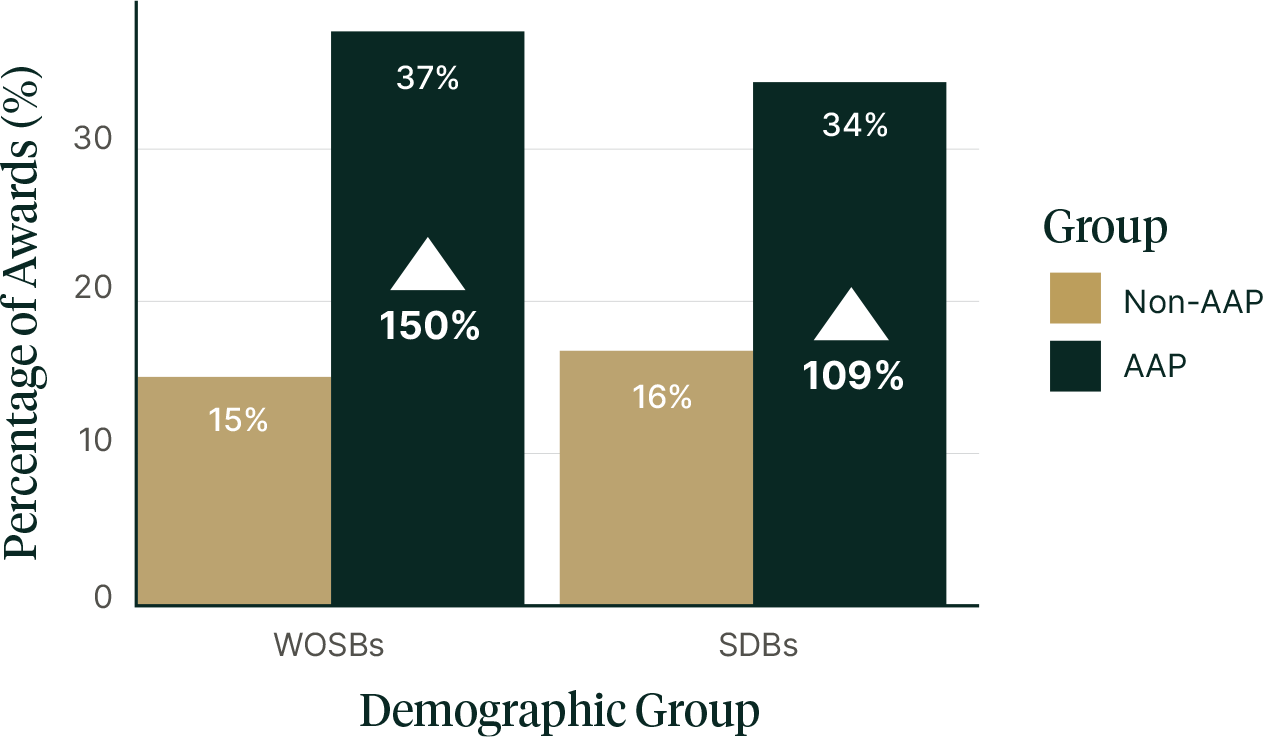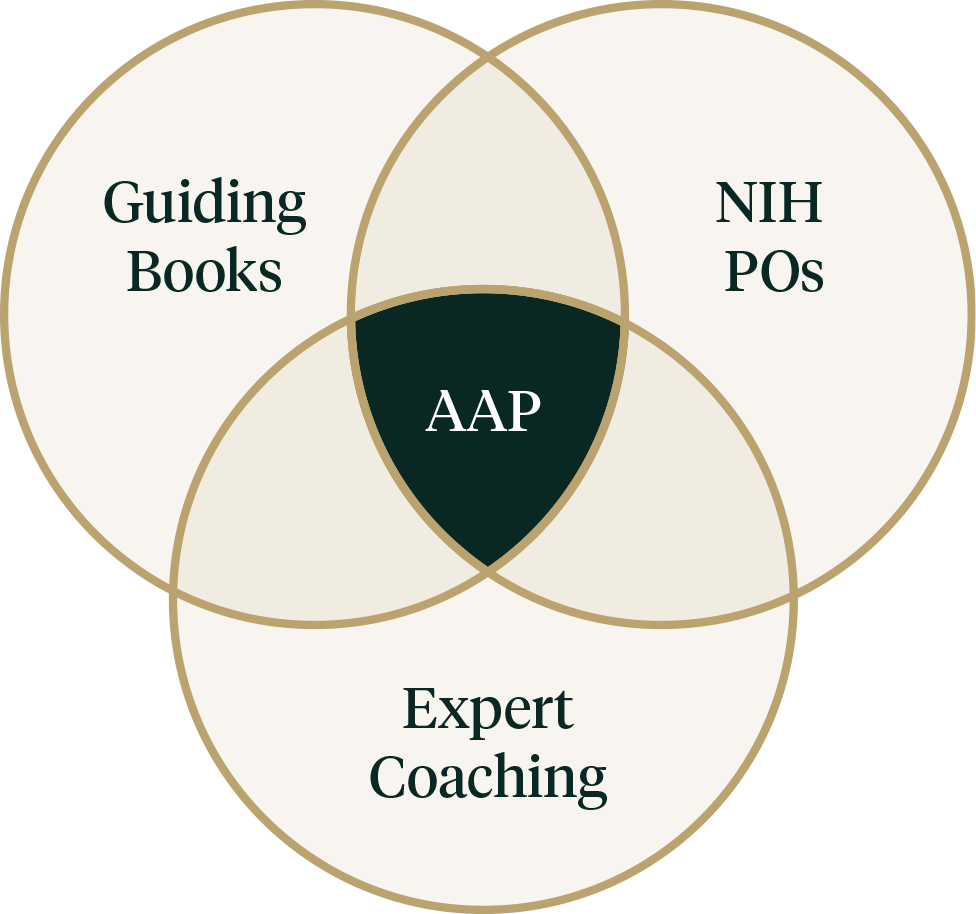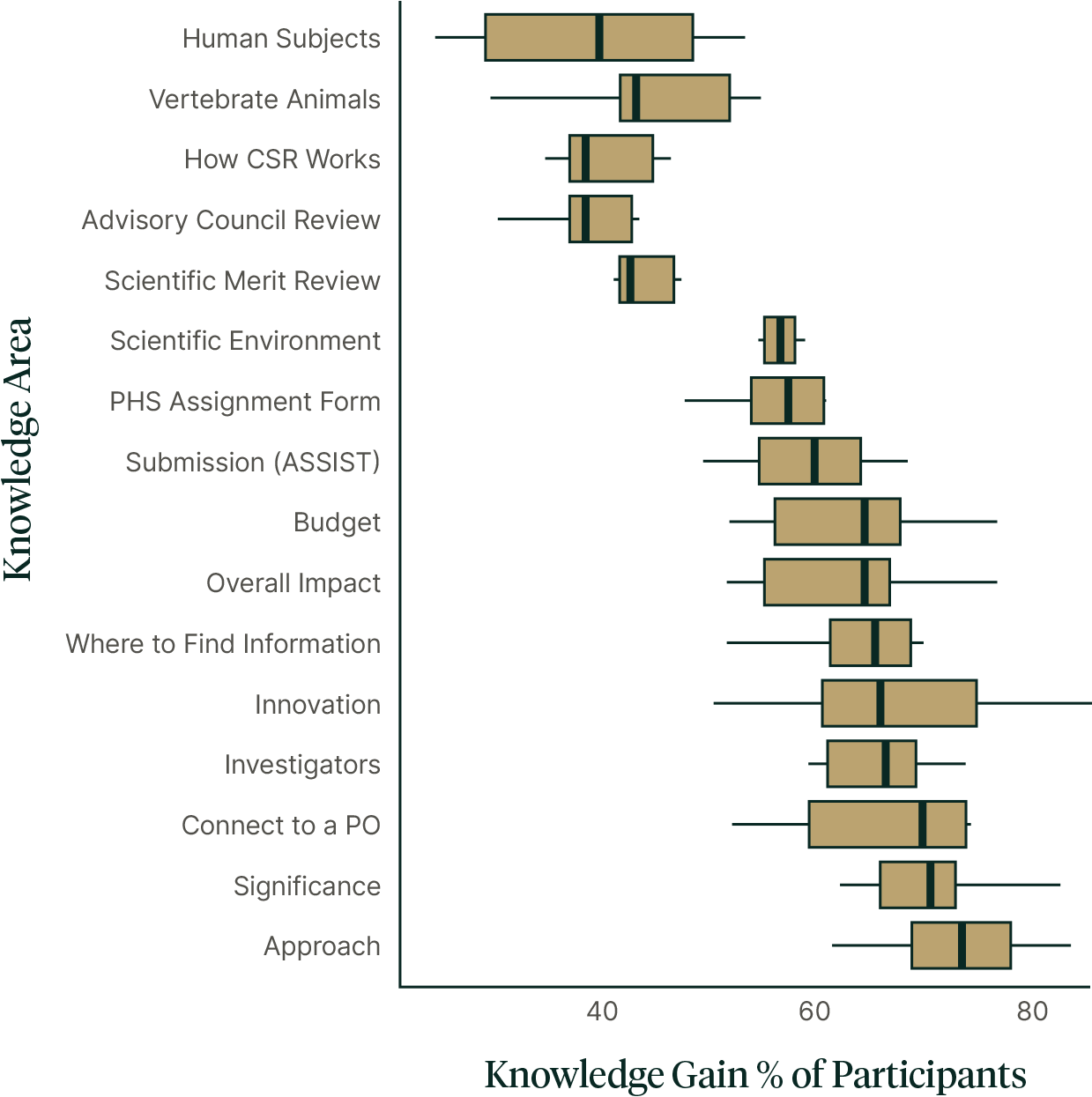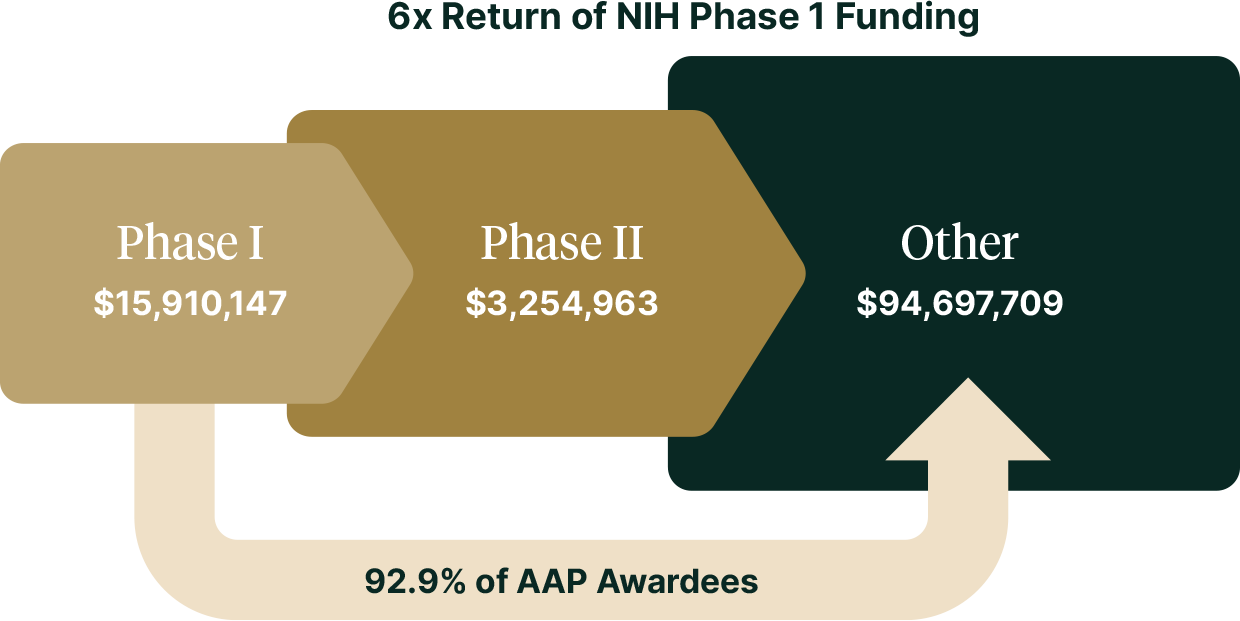The SBIR program was created to foster and encourage participation by the socially and economically disadvantaged small businesses and those that are 51 percent owned and controlled by women, in technological innovation. However, diversity in the program has remained low, with less than one-fifth of awards going to underrepresented groups. To counteract this lack of representation, EGC was contracted by the NIH to run an Applicant Assistance Program (AAP) in 2019 with the goal of increasing participation of women-owned small businesses (WOSBs) and socially and economically disadvantaged small businesses (SDBs) in the SBIR program.
As seen in Figure 1, the AAP was remarkably successful, and more than doubled the representation of WOSBs (37% vs. 15% in control group) and SDBs (34% vs. 16% in control group).

Figure 1
Figure 1 | The AAP enriches the percentage of Phase I SBIR awards directed to WOSBs (37%, n = 26 out of 70 total awards) and SDBs (34%, n = 24 out of 70 total awards) compared to the general awardee population (15%, n = 135 and 16%, n=149 out of 910 total awards to WOSBs and SDBs, respectively).
Key Insights from EGC’s Support of AAP

Figure 2
Figure 2 | Conceptual overview of the NIH AAP and how it uniquely integrates expert one-on-one coaching, discussions with POs, and a step-by-step guide to prepare a diverse pool of participants to submit competitive proposals, thus leveling the playing field for participation in the SBIR program.
Strong Programmatic Structure and Support
EGC empowered entrepreneurs by offering a comprehensive 10-week curriculum that included proposal preparation, communication with NIH Program Officers (POs), application submissions, weekly coaching sessions and access to the Winning SBIR/STTR Grants: A Ten-Week Plan for Preparing Your NIH Phase I Application book that offers step-by-step guidance (Figure 2).
Significant Knowledge Gains
EGC’s program curriculum, guided by expert PhD-level coaches, ensured participants acquired the essential skills and understanding for successful grant submissions. Participants reported significant gains across 16 knowledge areas relevant to grant preparation and submission, further highlighting the success of the AAP’s programmatic goals (Figure 3).

Figure 3
Figure 3 | Knowledge gain of AAP participants across the 16 knowledge areas relevant to NIH SBIR grant preparation and submission. Knowledge gain was calculated as the difference in the percent of AAP participants responding with “A great deal” between post- and pre-completion surveys (n = 716 surveys). Boxplots show data median, interquartile range, and the upper and lower range (1.5*interquartile range) for each knowledge area.

Figure 4
Figure 4 | Funding ontogeny for the 28 AAP participants who received NIH Phase I SBIR awards during or before the year 2021 following their participation in the AAP. Asterisk denotes the conservative nature of this estimate of follow-on funding and return on NIH Phase I SBIR investment given the limited period of time (2-3 full years post-Phase I award), and limitations of publicly available data.
Substantial Jump in Follow-on Funding
EGC enabled AAP participants to secure a 6x return on their initial SBIR award amounts within 2-3 years of receiving their Phase I award (Figure 4).
With participation from 11 NIH Institutes and 738 companies, the AAP has made significant strides in empowering entrepreneurs and enhancing diversity within the SBIR / STTR program. The success of the AAP serves as a model for designing effective policy interventions to support underrepresented groups in research and innovation.
Please click here to access the full Nature Biotechnology article and contact us should you have any questions or requests for further information.
